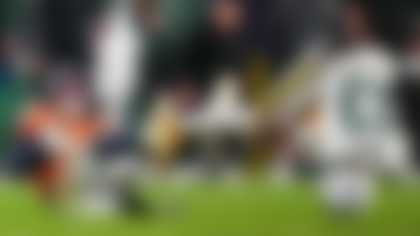NFL Evolution will feature a guest columnist every Tuesday, each with a different viewpoint of player health and safety from the youth level to pro football.
Dr. Elizabeth M. Pieroth, contributing columnist
The advice patients receive after they suffer a concussion is often the same. They are told to "rest."
This is good advice based on our understanding of the physiologic changes that occur in the brain after a concussion. Concussion is often described as an "energy crisis" of the brain, so limiting activity to reduce the additional energy demands of the brain during the initial recovery is an appropriate recommendation.
However, patients and their families are understandably confused about what that actually means. Should they take a nap or stop all activities? Can the concussed person go to school or work or not? Unfortunately, patients are given widely variable information on how to "rest" from their healthcare providers.
In a 2009 position paper, an international panel of experts recommended "complete physical and cognitive rest." The problem is that complete rest is not realistic (it's not possible to not use your brain or stop all physical movement!) and not truly what the experts meant. Four years later, in the updated position paper, the recommendation for "complete" rest was removed.
In the meantime, the notion of complete rest took on a life of its own. The recommendations given to patients were made with good intentions but lacked scientific support and caused many negative consequences.
Patients were told to "stay in a totally dark room" for days or even weeks, but there was no evidence that this was actually helpful. Instead, patients became anxious and isolated at home. Students were kept out of school for lengthy periods of time, even though they were engaging in cognitive activities at home. They became overwhelmed with the amount of school work to make up and fearful they would fall behind permanently.
Many students became depressed because of being removed from their classmates, teammates and previously enjoyed activities. Employees were not allowed to return to work, regardless of the financial ramifications for missing work.
More recent research has looked closely at this issue and found that those who dramatically limited their activity or remained in a dark room did not recover from a concussion any quicker than those who just reduced their activity initially. Additionally, other research did not find that students who stayed home from school for longer periods of time recovered sooner than those who took two days off after the injury.
If severe restrictions in activity are not helping and are causing other problems, why is this still being recommended? That is because changes in standard practices move slowly, even when healthcare providers are doing their best to stay up on the research. Particularly with research on concussions, our knowledge is evolving quickly.
At this time, we recommend limiting the amount of exposure to activities that increase a patient's symptoms, such as reading, computer use or other screens, during the initial recovery period. Not every activity will bother every person. The best approach for most patients is to take 1-2 days away from school or work. We then try to alter the school or work environment to lessen the triggers for the patient's symptoms. This typically includes removal from gym class, allowing a student breaks during the day if their headache increases, permitting a student to eat outside of the cafeteria to avoid being overstimulated, and delaying tests/quizzes until they are able to adequately study. There are many additional accommodations that can be utilized.
Some individuals, however, do benefit from greater time away from very stimulating environments but this should be determined on a case-by-case basis. It is not helpful to give the same recommendations to each patient. Any return-to-school or return-to-work plan should be individualized to address the patient's particular symptoms. They must also make sure these recommendations are adequately communicated to the school system or employer.
The goal is to find a solution that meets three objectives: minimizing the symptoms to aid the healing process; protecting a student's grades or employee's work status; and not being so restrictive that the student or employee is overwhelmed with the work to make up once they are recovered.
Finally, we no longer recommend removal from all physical activity until the patient has fully recovered. A return to physical activity is recommended once it can be tolerated by the patient, even if he/she is still symptomatic.
This notion of "active rehabilitation" encourages low level exertion (riding a stationary bicycle, walking) and research has been shown this aids the healing process. A return to physical exercise also improves sleep and mood in the concussed patient.
It's particularly important for athletes who are use to moving. However, the activity should not require extensive balance or be too jarring to the neck (running, jumping) until this has been approved by their healthcare provider.
Dr. Elizabeth M. Pieroth is a Board Certified Clinical Neuropsychologist and the Associate Director of the NorthShore University HealthSystem Sports Concussion Program (Evanston, Illinois). She has been involved in the assessment of players in the National Hockey League since 1997 and is the Head Injury/Concussion specialist for the Chicago Bears, Blackhawks, White Sox, and Fire and numerous colleges and high schools across the State of Illinois. She also is on the Board of Directors of the Brain Injury Association of Illinois and is a member of the USA Football Heads Up Advisory Committee and the U.S. Soccer Concussion Task Force.



